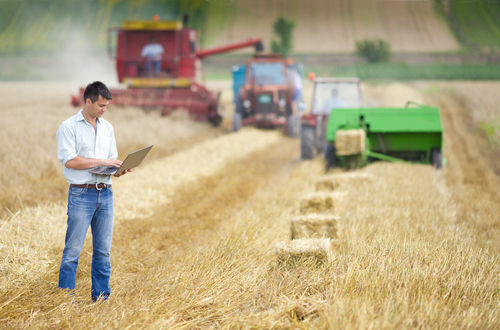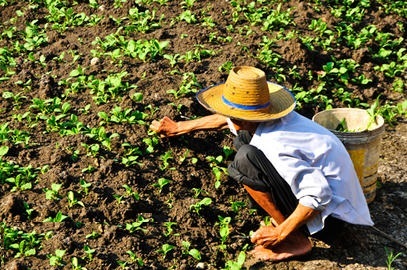THE agricultureit is one of the most important human activities. Through it, human beings were finally able to leave nomadism and settle in places where they could plant to obtain their food. Currently, agriculture has become an important economic activity and does not only serve the foodstuff production sector.
The evolution in production meant that there was now the possibility of a division between the systems productive. Today we will get to know the production modalities called extensive and intensive agriculture.
Mind Map: Agriculture

*To download the mind map in PDF, Click here!
intensive agriculture
It is a modality of agricultural production that intensively uses inputs and technology to increase productivity and reduce deadlines. It is a common system in developed countries. In underdeveloped ones, when it is used, its production is usually destined for the foreign market.
Characteristics of intensive agriculture

In intensive agriculture, there is the use of machinery, technology and specialized labor
There is an intense mechanization of all stages of the production process. From soil preparation, through combating crop pests and ending at harvest, they are used machines to perform each of these steps;
much of the labor used is qualified. As the use of machines is frequent, the few workers in this modality are concentrated in the technical areas and in equipment maintenance and operation;
Intensive agriculture uses different types of inputs to optimize production and increase productivity. Before planting, the soil is corrected and fertilized through chemical fertilizers. Pests are also controlled by pesticides, the so-called agricultural defensives, which have high cost, but high success power in combating harmful organisms to crops;
The seed selection and species that are either immune or more resistant to pests. In addition to selected seeds, the use of seeds and seedlings genetically modified, the seeds transgenic;
In the intensive production mode, it is common to use techniques and technology, such as irrigation, terracing, soil drainage, etc.
The purpose of this system and perhaps the main feature is the high productivity. Its reach depends on the investment in technological inputs and resources. As a result, there is an increase in productivity and a reduction in time for harvesting.
extensive agriculture
It is an agricultural system characterized by the use of rudimentary or traditional techniques in production. This type of agriculture can be found in both small and large properties with a predominance of human labor and low mechanization. It is common in underdeveloped countries, as it is a mode of production that requires less need for financial resources. In this regard, it is opposed to intensive agriculture, where there is significant financial investment.
Do not stop now... There's more after the advertising ;)

In extensive agriculture, it is common to use unskilled labor
Characteristics of extensive agriculture
This agricultural production system, unlike intensive agriculture, is carried out in a traditional way and works with a large number of workers;
Technology use is low or non-existent. As it is a mode of production that has few resources for investment, expensive agricultural production techniques are generally not used;
Soil preparation is done in a rudimentary way. In many cases, the plow is pulled by animals and there is no soil preparation, such as correction or use of fertilizers. Planting is done in the soil, under the conditions in which it is presented;
Seeds used are not selected. Often, the extensive farmer keeps a part of the previous production to be used as seed in the next plantings;
Competitiveness in the domestic and foreign markets is compromised, as the quality of production and productivity per hectare cannot come close to the level reached by intensive production;
Extensive agriculture is found on both small and large properties. What characterizes extensive agriculture is the low use of techniques, mechanization and agricultural inputs, and not the size of the planted area;
It is hostage to natural conditions, such as the condition of the soil at the time of sowing, the amount of rain at the right times and the humidity and temperature;
It is a modality that often presents low productivity per hectare. However, it can present high production when the planted area is large and natural conditions (such as rain and soil) favored production in that particular period.
Both extensive and intensive agriculture have impacts on the environment. The removal of vegetation cover for planting in both modalities is the beginning of a series of changes, often negative, in the natural environment. However, it is necessary to admit that intensive agriculture, due to the amount of inputs, resources and techniques, is the great villain with regard to environmental impacts.
The most significant criticisms of environmentalists are in the fact that this modality of agricultural production uses large amount of fossil fuels for machinery and pollutes the soil, air and water with correctives and pesticides agricultural.
By Amarolina Ribeiro
Graduated in Geography
*Mental Map by Rafaela Sousa
Graduated in Geography
Would you like to reference this text in a school or academic work? Look:
RIBEIRO, Amarolina. "Intensive and extensive agriculture"; Brazil School. Available in: https://brasilescola.uol.com.br/geografia/agricultura-intensiva-extensiva.htm. Accessed on June 27, 2021.
